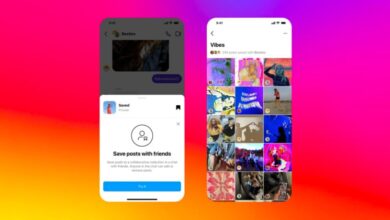
Sell the Dream How Advertising Elevates Your Brand
Sell the dream how advertising can elevate your brand – Sell the Dream: How Advertising Can Elevate Your Brand – that’s the magic we’re unpacking today! We all crave brands that resonate, that tap into our deepest desires and aspirations. This isn’t about slick sales pitches; it’s about crafting a narrative that connects with your audience on an emotional level, building a loyal following who believe in what you stand for.
We’ll dive into how compelling storytelling, stunning visuals, and targeted messaging can transform your brand from a simple logo to a powerful symbol of aspiration.
From defining your brand’s “dream” – its core values and aspirational message – to mastering the art of visual communication and measuring campaign success, we’ll explore every facet of building a brand that truly resonates. We’ll examine real-world examples of successful campaigns, discuss the ethical considerations involved, and equip you with the tools to craft your own compelling brand narrative.
Get ready to learn how to sell the dream and watch your brand soar!
Defining “The Dream”: Sell The Dream How Advertising Can Elevate Your Brand
Selling a product or service isn’t just about listing features; it’s about connecting with your audience on an emotional level. It’s about selling a dream – a vision of a better life, a more fulfilling experience, a solution to a deeply felt need. This dream is inextricably linked to your brand identity and the aspirational messaging you craft. A strong brand narrative acts as the bridge, connecting your product with the desires and aspirations of your target customer.A compelling brand narrative goes beyond simply stating what you do; it paints a picture of the world you’re creating, the values you embody, and the transformation your product facilitates.
It’s a story that resonates deeply, forging an emotional connection that transcends mere transactions. Think about Apple’s “Think Different” campaign – it wasn’t just about selling computers; it was about selling a lifestyle, a sense of creativity and innovation. Similarly, Patagonia’s commitment to environmental sustainability is woven into their brand narrative, attracting customers who share those values.
Brand Personality Archetypes and Their Dream-Selling Strategies
Understanding your target audience and crafting a brand personality that resonates with them is crucial. Three distinct brand personality archetypes, each with a unique approach to selling the dream, are:
- The Hero: This archetype embodies strength, courage, and the pursuit of excellence. They sell the dream of overcoming challenges and achieving greatness. Think Nike’s “Just Do It” campaign – it empowers individuals to push their limits and achieve their personal best. Their advertising often features inspirational athletes and powerful visuals that evoke feelings of accomplishment and self-improvement.
- The Explorer: This archetype represents freedom, discovery, and a thirst for adventure. They sell the dream of escaping the ordinary and embracing the unknown. Outdoor brands like REI often utilize this archetype, showcasing stunning landscapes and adventurous expeditions to inspire a sense of wanderlust and exploration in their target audience. Their marketing materials often emphasize independence, self-reliance, and the beauty of nature.
- The Creator: This archetype embodies innovation, imagination, and the power of self-expression. They sell the dream of bringing ideas to life and shaping the world around them. A company like LEGO, with its focus on building and creativity, perfectly embodies this archetype. Their advertising highlights the endless possibilities of imaginative play and self-discovery, inspiring creativity and a sense of accomplishment in both children and adults.
Powerful Verbs for Evoking Emotional Responses
The words you choose are powerful tools in shaping your brand’s narrative and evoking the desired emotional response. Selecting verbs that resonate with your target audience’s aspirations is critical for effectively selling the dream.
Here are five powerful verbs that can effectively convey the aspirational message of your brand:
- Transform: This verb suggests a profound change, indicating a journey of self-improvement or a significant shift in perspective. It appeals to the desire for personal growth and a better future.
- Empower: This verb emphasizes strength, capability, and independence. It resonates with audiences who value self-reliance and the ability to take control of their lives.
- Inspire: This verb suggests motivation, passion, and the pursuit of something greater. It connects with the desire for meaning and purpose in life.
- Unleash: This verb signifies freedom, potential, and the release of inner strength. It appeals to those who desire to break free from limitations and express their true selves.
- Discover: This verb highlights exploration, adventure, and the thrill of the unknown. It resonates with those who seek new experiences and a sense of wonder.
Crafting Compelling Narratives
Storytelling is the heart of effective advertising. It’s not just about showcasing a product’s features; it’s about connecting with the audience on an emotional level, weaving a narrative that resonates with their aspirations and desires. By crafting compelling narratives, brands can elevate themselves beyond mere product providers and become integral parts of their customers’ lives, forging lasting relationships built on shared values and experiences.
This is how advertising truly sells the dream.Successful advertising campaigns often employ powerful storytelling techniques to create memorable and impactful connections with their target audience. They tap into universal human emotions, desires, and experiences, building narratives that resonate deeply and inspire action. These stories are not simply advertisements; they are miniature epics, carefully constructed to evoke specific feelings and cement the brand’s image in the consumer’s mind.
Examples of Successful Advertising Campaigns
Three advertising campaigns that masterfully “sold the dream” through compelling narratives are Dove’s “Real Beauty” campaign, Apple’s “1984” Super Bowl commercial, and Nike’s “Just Do It” campaign. These campaigns demonstrate the power of storytelling in creating a lasting brand image and emotional connection with consumers.Dove’s “Real Beauty” campaign challenged conventional beauty standards by showcasing women of diverse shapes, sizes, and ethnicities.
The narrative centered on the idea of self-acceptance and celebrating real beauty, rather than conforming to unrealistic ideals. This resonated deeply with many women who felt marginalized by the industry’s narrow definition of beauty. The campaign’s narrative structure is a classic underdog story, shifting the power dynamic from the idealized beauty standard to the everyday woman.Apple’s “1984” Super Bowl commercial, directed by Ridley Scott, presented a dystopian future ruled by a monolithic Big Brother figure representing IBM.
A female athlete throws a hammer, shattering the screen and liberating the audience from the oppressive regime. This narrative structure is a classic hero’s journey, portraying Apple as the revolutionary force breaking free from the established order and offering a vision of freedom and innovation.Nike’s “Just Do It” campaign, spanning decades, uses short, impactful stories featuring athletes from diverse backgrounds overcoming challenges and achieving greatness.
The narrative structure focuses on individual journeys of perseverance, resilience, and the pursuit of excellence. It inspires viewers to push their own limits and embrace their potential, directly associating the brand with personal achievement and self-improvement.
A Fictional Brand Story: “Evergreen Trails”
Evergreen Trails is a fictional outdoor apparel brand targeting environmentally conscious adventurers. Their core values are sustainability, community, and exploration. The brand story centers around a group of friends who embark on a challenging hike through a remote wilderness area. They face unexpected obstacles, but their shared passion for nature and mutual support help them overcome these challenges.
The narrative highlights the importance of respecting the environment, working together, and appreciating the beauty of the natural world. This resonates with the target audience because it showcases the brand’s values in action, portraying a relatable and aspirational adventure that embodies the spirit of exploration and environmental stewardship. The friends’ successful journey reinforces the brand’s commitment to quality, durability, and sustainability, subtly suggesting that Evergreen Trails gear is an essential element for such experiences.
Analysis of Imagery and Symbolism in Patagonia’s Advertising
Patagonia, a well-known outdoor clothing company, effectively uses imagery and symbolism to communicate its aspirational message of environmental conservation and responsible outdoor recreation. Their advertisements frequently feature stunning landscapes, often showcasing pristine, untouched wilderness. These images symbolize the beauty and fragility of nature, implicitly urging viewers to protect these environments. The use of individuals engaged in activities like climbing, kayaking, and hiking conveys a sense of adventure, freedom, and connection with nature.
Furthermore, Patagonia often features diverse individuals participating in these activities, promoting inclusivity and accessibility to the outdoors. The subtle inclusion of recycled materials in their clothing and the frequent highlighting of their environmental initiatives reinforce their commitment to sustainability. The overall effect is a powerful visual narrative that seamlessly blends brand identity with a compelling message of environmental responsibility, inspiring consumers to embrace both adventure and conservation.
Visual Communication
Effective visual communication is paramount in selling the dream. It’s the bridge between your brand’s aspirational message and your target audience’s emotions. A well-crafted visual identity can instantly communicate brand values, personality, and the unique experience your brand offers. Ignoring this crucial aspect means missing a powerful opportunity to connect with consumers on a deeper level.
Mood Board: “Wanderlust” Travel Brand
Imagine a mood board for a travel brand named “Wanderlust.” The overall feeling is one of adventurous freedom and inspiring discovery. The color palette would feature earthy tones like deep greens and sandy browns, accented by vibrant blues representing the ocean and sky. Imagine images of sun-drenched beaches, majestic mountains, bustling city streets, and serene landscapes. The fonts would be a mix of a bold, adventurous serif for headlines and a clean, elegant sans-serif for body text, evoking a sense of both excitement and sophistication.
The imagery would showcase diverse cultures and breathtaking natural beauty, emphasizing the unique experiences available through Wanderlust travel packages. The overall aesthetic aims to inspire a sense of wanderlust and a desire for exploration and adventure.
Visual Styles and Their Application
Three distinct visual styles can effectively convey the aspirational message of the “Wanderlust” brand:
Minimalist: A minimalist approach would focus on clean lines, simple imagery, and a limited color palette. This style emphasizes the inherent beauty of the destinations, allowing the landscapes and experiences to speak for themselves. Think stark white backgrounds, high-quality photography of iconic landmarks, and minimal text. This conveys a sense of sophistication and understated luxury.
Vibrant: A vibrant style would use a bold color palette, dynamic compositions, and energetic imagery. This approach would emphasize the excitement and adventure associated with travel, creating a visually stimulating and engaging experience. Think bright, saturated colors, action shots of travelers exploring new places, and a playful font choice. This style would be perfect for showcasing the energetic and diverse experiences offered by Wanderlust.
Nostalgic: A nostalgic style would use vintage imagery, muted color palettes, and classic typography to evoke a sense of timeless travel experiences. This approach would tap into a sense of longing for simpler times and classic adventures. Think faded photographs, sepia tones, and elegant script fonts. This style would be ideal for highlighting the rich history and cultural heritage of the destinations featured by Wanderlust.
Brand Visual Style Table
| Brand Name | Target Audience | Brand Values | Visual Style |
|---|---|---|---|
| Wanderlust | Millennials and Gen Z seeking authentic travel experiences | Adventure, Discovery, Authenticity, Sustainability | Vibrant with minimalist elements |
Target Audience Engagement
Connecting with your target audience on an emotional level is crucial for selling the dream. It’s not just about showcasing product features; it’s about aligning your brand with the aspirations and desires of your customers, making them feel understood and seen. This deep connection fosters brand loyalty and drives sales far beyond a simple transaction.
Identifying Distinct Customer Segments and Tailored Marketing Messages, Sell the dream how advertising can elevate your brand
To effectively sell the dream, we need to understand our audience. Let’s consider a hypothetical “smart home” system called “HomeHarmony.” We can identify three distinct customer segments:
- Busy Professionals: This segment values convenience and efficiency above all else. Their dream is a simplified, stress-free life. Marketing message: “Reclaim your evenings. HomeHarmony automates your home, so you can focus on what matters most.” The message emphasizes time-saving and stress reduction, directly addressing their aspirations.
- Tech-Savvy Families: This segment prioritizes innovation, connectivity, and family fun. Their dream is a technologically advanced home that brings everyone closer. Marketing message: “Connect, control, and create unforgettable family moments. HomeHarmony is the ultimate smart home hub for modern families.” This message highlights the technological aspects and the family-oriented benefits.
- Eco-Conscious Homeowners: This segment is driven by sustainability and energy efficiency. Their dream is a responsible and environmentally friendly home. Marketing message: “Live sustainably, without compromise. HomeHarmony helps you monitor and optimize your energy consumption, reducing your carbon footprint and saving you money.” This message focuses on environmental responsibility and cost savings, key concerns for this segment.
Psychological Principles in “Selling the Dream”
The effectiveness of “selling the dream” hinges on tapping into fundamental psychological principles. Aspirational identity plays a key role; consumers buy products that align with the person they want to be. For example, luxury car ads often depict a successful, sophisticated lifestyle, attracting buyers who aspire to that image. Self-enhancement is another powerful motivator; people purchase products to improve their self-image and boost their confidence.
A fitness tracker, for instance, can appeal to someone’s desire for self-improvement and a healthier lifestyle.
Comparing Emotional and Rational Advertising Approaches
Two distinct advertising approaches – emotional and rational – can be employed to sell the dream, each with its own strengths and weaknesses.Emotional advertising focuses on evoking feelings and creating a strong connection with the audience. A classic example is Coca-Cola’s “Share a Coke” campaign, which fostered a sense of connection and shared happiness. This approach is highly effective in building brand loyalty and creating memorable experiences, but may lack concrete details about the product.Rational advertising, on the other hand, emphasizes the product’s features, benefits, and value proposition.
A car commercial highlighting fuel efficiency, safety features, and reliability is a good example. This approach is effective in conveying information and convincing consumers based on logic and reason, but it may not be as engaging or memorable as emotional advertising. Ultimately, a balanced approach, combining both emotional and rational elements, is often the most effective strategy for selling the dream.
Measuring Success

Source: ytimg.com
Selling the dream isn’t just about creating beautiful visuals and compelling narratives; it’s about demonstrably impacting your brand’s bottom line. Measuring the success of an aspirational advertising campaign requires a blend of quantitative data and qualitative insights, allowing you to understand not only
- if* your campaign is working, but
- how* and
- why*. This understanding is crucial for optimizing future campaigns and maximizing your return on investment (ROI).
Understanding the impact of a “dream-selling” campaign necessitates a multi-faceted approach. We can’t solely rely on immediate sales figures; instead, we need to track a range of metrics that reflect the long-term brand building effects of connecting with your target audience on an emotional level. This involves measuring changes in brand perception, customer engagement, and ultimately, business outcomes.
Quantitative Metrics and KPIs
To effectively gauge the success of your campaign, tracking specific Key Performance Indicators (KPIs) is essential. These KPIs provide quantifiable data that allows for objective evaluation and comparison across campaigns.
Selling the dream is all about crafting a compelling brand narrative, and that’s where smart advertising comes in. To really connect with your audience, you need to be where they are, and that often means a strong YouTube presence. Check out this awesome guide on getting it on with YouTube to learn how to maximize your reach.
Ultimately, a well-executed YouTube strategy is a powerful tool for elevating your brand and selling that dream to a wider audience.
Here are five key performance indicators to monitor:
- Website Traffic and Engagement: Track increases in website visits, time spent on site, pages viewed per visit, and bounce rate. A successful campaign should drive significant traffic to your website, and more importantly, keep visitors engaged.
- Social Media Engagement: Monitor metrics like likes, shares, comments, and mentions across relevant social media platforms. Increased engagement suggests that your aspirational message is resonating with your target audience and generating conversation.
- Brand Mentions and Sentiment: Track the volume of brand mentions across online platforms and analyze the sentiment surrounding those mentions (positive, negative, or neutral). Positive sentiment indicates a successful campaign in building brand affinity.
- Lead Generation and Conversion Rates: Measure the number of leads generated (e.g., email sign-ups, demo requests) and the conversion rate from leads to customers. This directly links your aspirational messaging to tangible business outcomes.
- Sales Growth: While not always immediate, a successful aspirational campaign should contribute to long-term sales growth. Track sales figures before, during, and after the campaign to assess its impact on revenue.
Qualitative Data Gathering: Understanding Customer Resonance
While quantitative data provides valuable numbers, qualitative data provides crucial context. Understanding
why* your campaign is (or isn’t) successful requires actively seeking customer feedback.
A comprehensive plan for gathering customer feedback should include the following:
- Post-Campaign Surveys: Conduct online surveys to gauge customer perceptions of the campaign’s messaging, visuals, and overall effectiveness. Include open-ended questions to allow for detailed feedback.
- Focus Groups: Organize small group discussions with representative members of your target audience to explore their emotional responses to the campaign and identify areas for improvement.
- Social Media Monitoring: Actively monitor social media channels for customer comments, reviews, and feedback. Respond to comments and engage in conversations to better understand customer perspectives.
- Customer Interviews: Conduct one-on-one interviews with select customers to delve deeper into their experiences with the campaign and their perceptions of the brand.
- A/B Testing: Test different versions of your ads and messaging to see which resonates most effectively with your target audience. This allows for data-driven optimization of your campaign.
Ethical Considerations

Source: ytimg.com
Selling the dream is powerful, but it’s crucial to do so responsibly. Aspirational advertising, while effective, walks a tightrope between inspiring consumers and misleading them. The ethical implications of using aspirational messaging hinge on authenticity and transparency – a delicate balance that requires careful consideration. Unrealistic portrayals can damage brand trust and even lead to legal repercussions.The core issue lies in the potential for creating unrealistic expectations.
When advertisements present a heavily filtered or digitally enhanced version of reality, consumers may feel let down when their experiences don’t match the idealized image presented. This can lead to feelings of inadequacy, dissatisfaction, and ultimately, distrust in the brand. Furthermore, using manipulative tactics to create desire, such as employing unrealistic body types or promoting unsustainable lifestyles, can be considered unethical and even harmful.
Authenticity in Aspirational Messaging
Maintaining authenticity means presenting a genuine and relatable image of your brand and its products. This doesn’t mean abandoning aspirational messaging entirely; rather, it involves presenting aspirational goals in a realistic and achievable light. For example, instead of showcasing impossibly perfect models, brands can feature diverse individuals who embody the spirit of the brand’s message. Instead of promising unrealistic results, they can focus on the journey and the process of achieving a goal, acknowledging the challenges and setbacks along the way.
Dove’s “Real Beauty” campaign is a prime example of a brand successfully using aspirational messaging while remaining authentic and relatable. Their focus on diverse body types and celebrating natural beauty resonated deeply with consumers, building trust and loyalty.
Transparency in Advertising Practices
Transparency involves being open and honest about your advertising practices. This includes disclosing any digital enhancements or alterations made to images or videos, as well as being clear about the limitations of products or services. This builds consumer trust and avoids the potential for misleading or deceptive practices. Patagonia, known for its commitment to environmental sustainability, exemplifies transparency.
They openly communicate the environmental impact of their products, highlighting both the positive and negative aspects. This honesty resonates with consumers who value ethical and sustainable practices, strengthening their brand loyalty.
Aligning Aspirational Messaging with Core Values
To ensure that your brand’s aspirational messaging aligns with its core values, it’s essential to define those values clearly and consistently. Every aspect of your advertising, from the visuals to the language used, should reflect these values. If your brand champions sustainability, for instance, your advertising should avoid portraying lifestyles that are environmentally damaging. If your brand values inclusivity, your advertising should feature diverse representation and avoid perpetuating harmful stereotypes.
By aligning your aspirational messaging with your core values, you create a cohesive and credible brand identity that resonates with consumers who share your values. This approach fosters genuine connection and builds long-term trust.
Epilogue
Ultimately, selling the dream isn’t about creating unrealistic expectations; it’s about authentically connecting with your audience’s aspirations. By understanding your target market, crafting a compelling narrative, and utilizing powerful visuals, you can build a brand that inspires loyalty and drives lasting success. Remember, it’s about more than just selling a product – it’s about selling a vision, a lifestyle, a belief.
So, go forth and create a brand that truly resonates, a brand that sells the dream!
Clarifying Questions
What if my brand’s “dream” is too niche?
Even niche dreams can resonate! Focus on the specific desires and values of your target audience within that niche. Strong, targeted messaging is key.
How can I measure the “emotional” impact of my campaign?
Qualitative data is crucial here. Use social listening, customer surveys, and focus groups to gauge emotional responses. Look for mentions of feeling inspired, connected, or understood.
What if my budget is limited?
Focus on creative storytelling and impactful visuals. Leverage free or low-cost platforms for social media marketing and content creation. Authenticity trumps expensive production values.
How do I avoid appearing inauthentic when “selling the dream”?
Transparency and honesty are paramount. Be realistic in your messaging and avoid making promises you can’t keep. Focus on the genuine values and benefits your brand offers.





